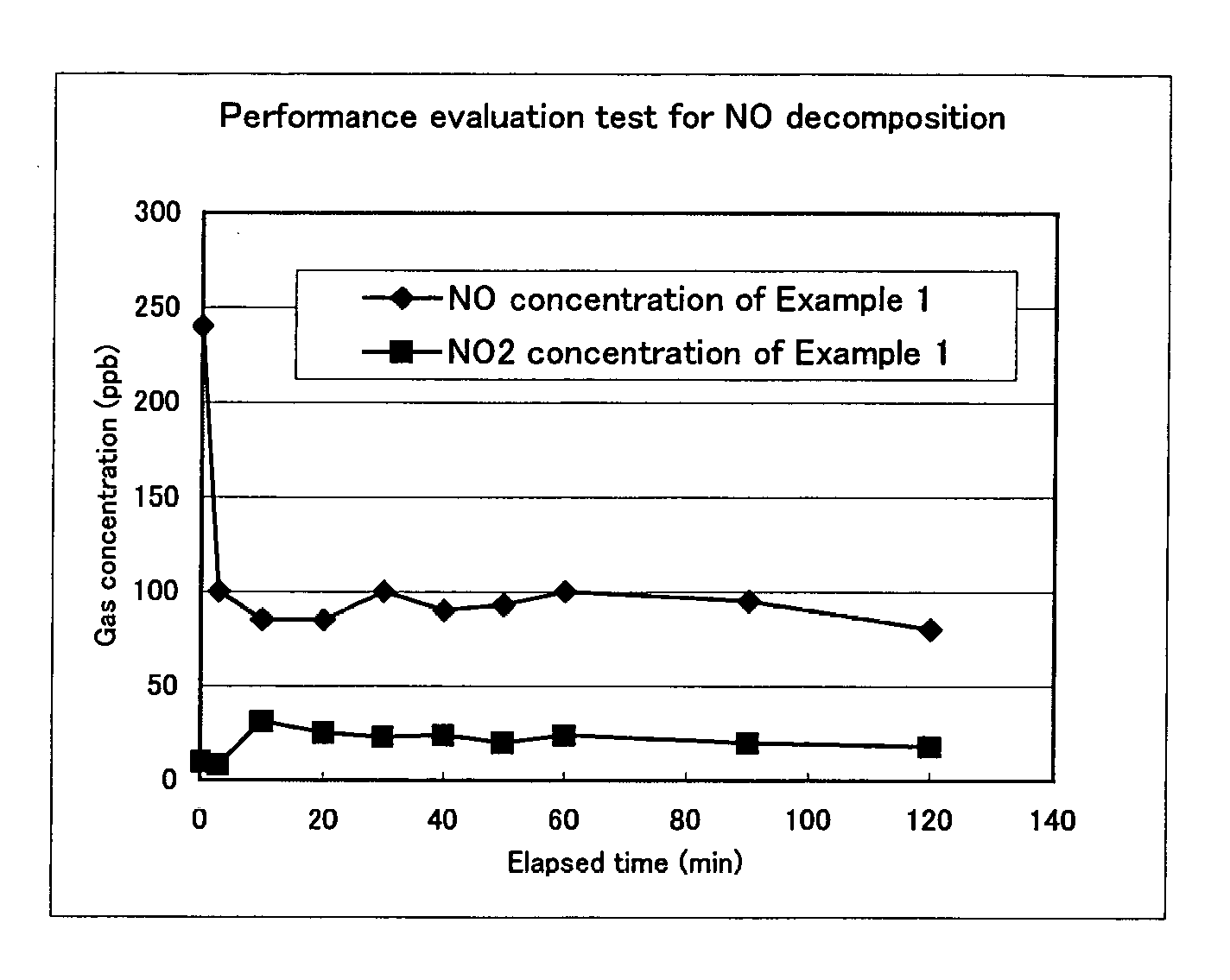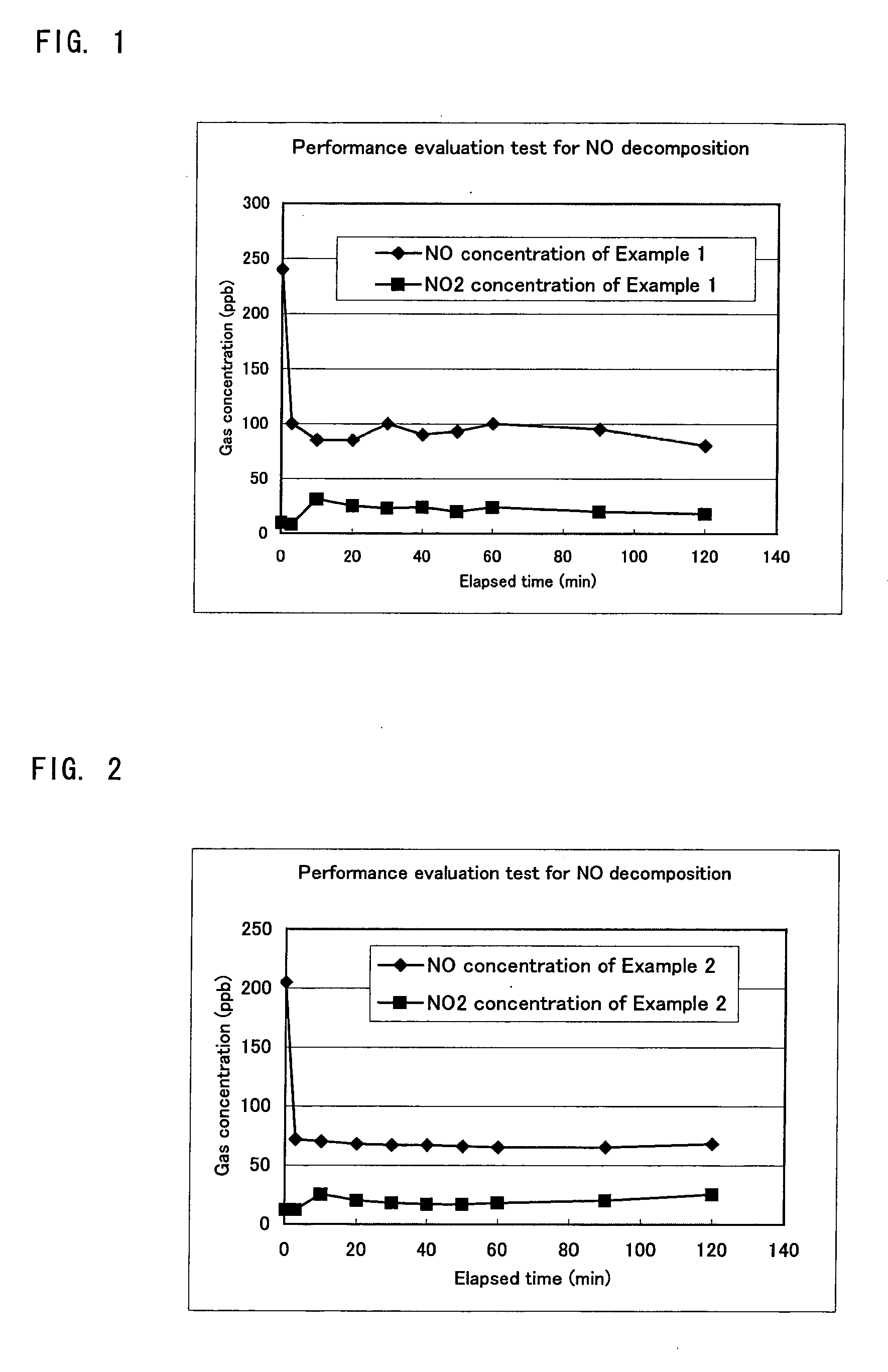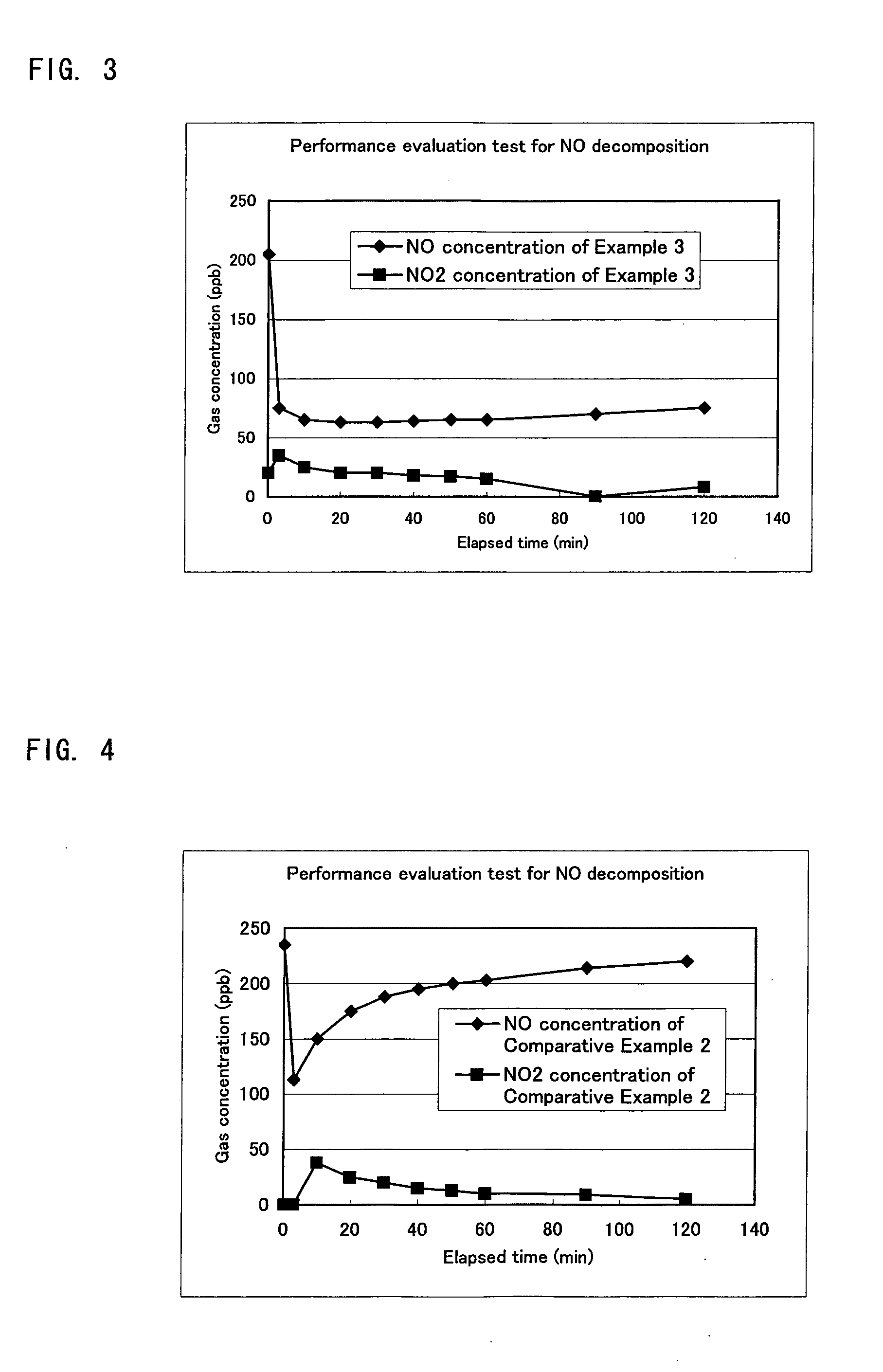Photocatalytic coating material, photocatalytic composite material and method for producing the same, and self-cleaning water-based coating composition and self-cleaning member
a photocatalytic and composite material technology, applied in the direction of organic compounds/hydrides/coordination complexes, physical/chemical process catalysts, metal/metal-oxides/metal-hydroxide catalysts, etc., can solve the problems of increasing environmental pollution, dirt and stains on building exteriors, outdoor structures and coating films thereon, etc., to enhance the adhesion of the coating film
- Summary
- Abstract
- Description
- Claims
- Application Information
AI Technical Summary
Benefits of technology
Problems solved by technology
Method used
Image
Examples
example 1
[0099] 10.2 parts by weight of photocatalytic oxide sol (PALTITAN 5610, by NIHON PARKERRIZING Co., Ltd.), 79.6 parts by weight of colloidal silica (SILICADOL 30B, by Nippon Chemical Industrial CO., LTD.), 10.2 parts by weight of fluorine resin emulsion (Lumiflon FE3000, by Asahi Glass Co., Ltd.) (so far indicated in terms of solid matter) and 2.1 parts by weight of film integrity assistant (Texanol, by Eastman Kodak Company) were mixed to prepare a water-based coating composition. The amount of water was 433 parts by weight per 100 parts of the total solid matter.
example 2
[0100] 20.1 parts by weight of photocatalytic oxide sol (TKS-203, by TAYCA Corporation), 10.2 parts by weight of colloidal silica (Snowtex 50, by Nissan Chemicals Industries, Ltd.), 69.7 parts by weight of fluorine resin emulsion (Lumiflon FE4300, by Asahi Glass Co., Ltd.) (so far indicated in terms of solid matter) and 15.7 parts by weight of film integrity assistant (Texanol, by Eastman Kodak Company) were mixed to prepare a water-based coating composition. The amount of water was 159 parts by weight per 100 parts of the total solid matter.
example 3
[0101] 3.2 parts by weight of photocatalytic oxide sol (PALTITAN 5610, by NIHON PARKERRIZING Co., Ltd.), 25.9 parts by weight of colloidal silica (Snowtex 50, by Nissan Chemicals Industries, Ltd.), 3.2 parts by weight of fluorine resin emulsion (Lumiflon FE4300, by Asahi Glass Co., Ltd.), 38.9 parts by weight of coloring pigment (MF Color MF5160, by Dainichiseika Color and Chemical Mfg. Co., Ltd.), 28.8 parts by weight of extender pigment (Tismo N, by Otsuka Chemical Co., Ltd.) (so far indicated in terms of solid matter) and 0.7 parts by weight of film integrity assistant (CS-12, by CHISSO CORPORATION) were mixed to prepare a water-based coating composition. The amount of water was 132 parts by weight per 100 parts of the total solid matter.
PUM
| Property | Measurement | Unit |
|---|---|---|
| particle size | aaaaa | aaaaa |
| particle size | aaaaa | aaaaa |
| particle size | aaaaa | aaaaa |
Abstract
Description
Claims
Application Information
 Login to View More
Login to View More - R&D
- Intellectual Property
- Life Sciences
- Materials
- Tech Scout
- Unparalleled Data Quality
- Higher Quality Content
- 60% Fewer Hallucinations
Browse by: Latest US Patents, China's latest patents, Technical Efficacy Thesaurus, Application Domain, Technology Topic, Popular Technical Reports.
© 2025 PatSnap. All rights reserved.Legal|Privacy policy|Modern Slavery Act Transparency Statement|Sitemap|About US| Contact US: help@patsnap.com



